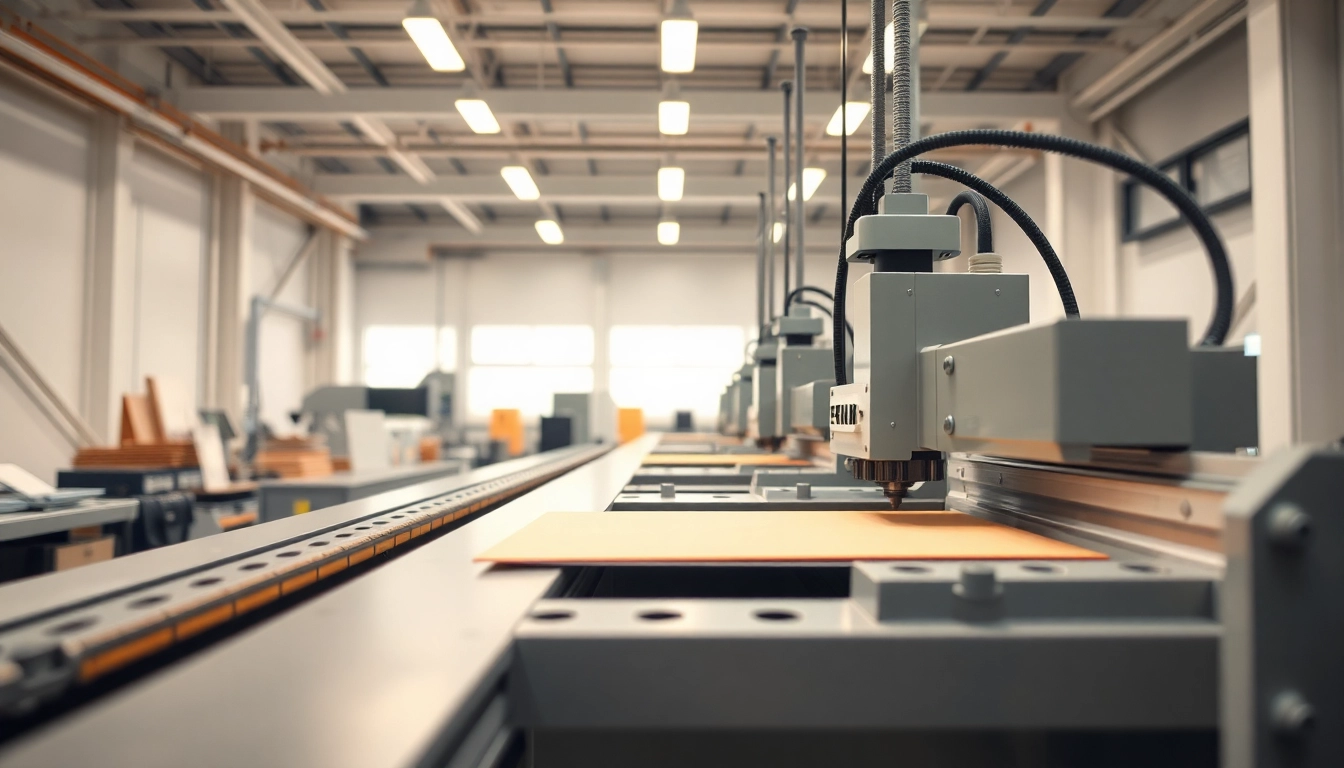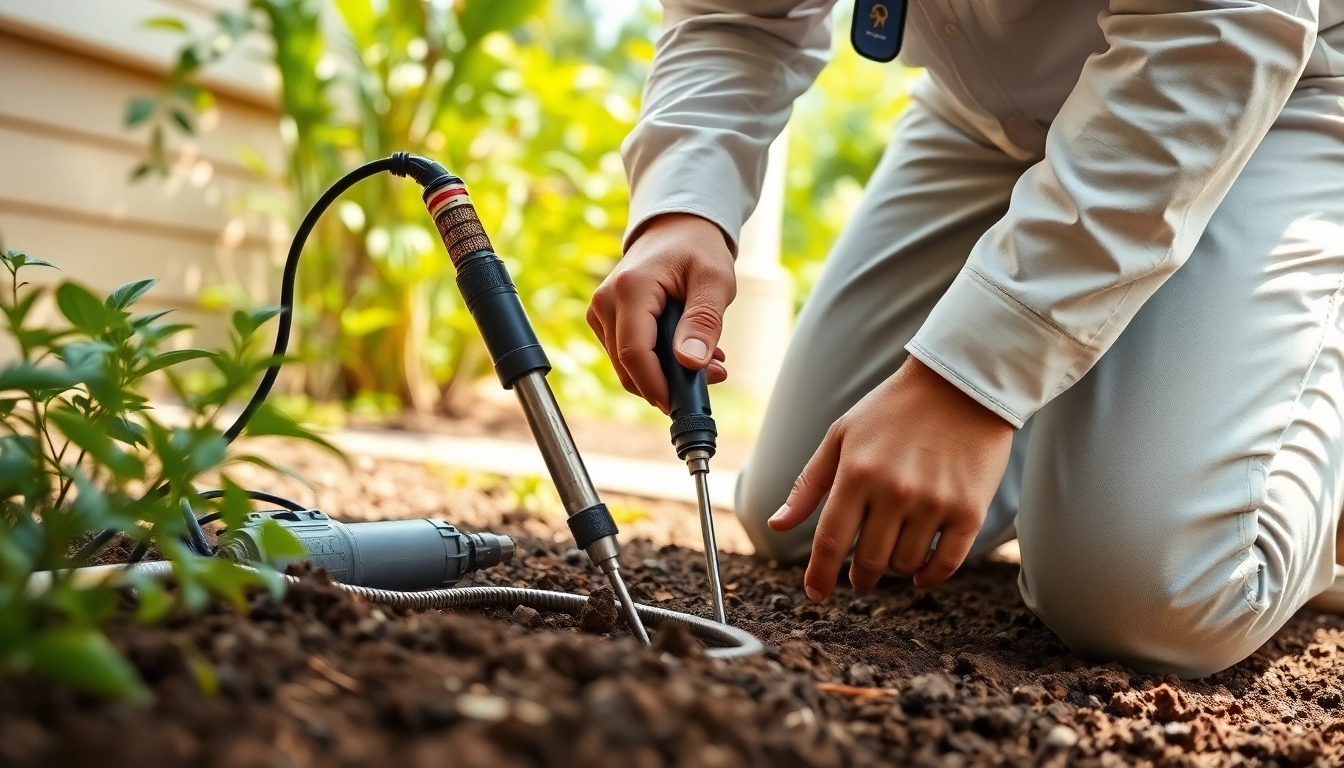Understanding Precision Die Cutting
Precision die cutting is a manufacturing process that transforms flat sheets or rolls of material into custom-shaped parts through a controlled cutting method. This technique is favored across many industries due to its high accuracy and consistent output, rendering it invaluable for producing everything from packaging components to intricate electronic parts. Whether you’re evaluating precision die cutting options for your organization or looking to understand the ins and outs of this technology, grasping its fundamentals is essential.
What is Precision Die Cutting?
Precision die cutting utilizes specialized tools and machinery to cut materials to precise specifications. By using either steel rule dies or rotary dies, companies can achieve exceptionally intricate designs and tight tolerances, which are critical for industries like automotive, aerospace, medical, and electronics. The process typically involves the following steps:
- Design Creation: The process begins with digital designs that outline the intended cut shapes.
- Die Creation: A die is manufactured based on the design specifications. This can be a flat steel rule die or a rotary die.
- Material Placement: The material intended for cutting (such as paper, cardboard, foam, or plastic) is placed into the die-cutting machine.
- Cutting Process: The machine moves the die down onto the material, creating the desired cuts with high speed and consistency.
- Post-Processing: After cutting, parts may undergo additional processes like stripping, applying adhesives, or assembling components.
Importance of Precision in Die Cutting
The significance of precision in die cutting cannot be overstated. High-quality die cutting ensures that products meet strict dimensional tolerances, are easy to assemble, and fit together without gaps, especially in complex applications like electronics where misalignments can lead to significant issues. Key reasons for prioritizing precision include:
- Consistency: Ensures every produced part meets the same specifications, which is vital in mass production.
- Reduces Waste: Precision cutting minimizes material waste and maximizes yield, thus improving cost efficiency.
- Enhanced Performance: Well-cut components perform better and reduce the risk of product failure, which is crucial in competitive markets.
- Flexibility: Precision die cutting can easily adapt to different materials and sizes, allowing companies to innovate and stay ahead of trends.
Applications of Precision Die Cutting
Precision die cutting serves a wide array of applications across multiple industries, showcasing its versatility. Some of the primary applications include:
- Packaging Industry: Custom boxes, inserts, and labels.
- Automotive Industry: Gaskets, seals, and insulation parts.
- Medical Field: Surgical tapes, face masks, and wound dressings.
- Electronics: Insulating materials, gaskets, and custom cut foam.
- Textiles: Custom textile patterns and product tags.
Types of Precision Die Cutting Techniques
Flatbed Die Cutting Explained
Flatbed die cutting is a traditional method where a flatbed machine operates using a hydraulic press. This technique is suitable for a wide range of materials and is known for its excellent accuracy. Flatbed cutting features include:
- Versatility: Works well with various thicknesses and materials.
- Simplified Setup: Easy to set up different designs for small batch runs.
- High Detail Capability: Achieves intricate designs due to the flat surface, which maintains even pressure throughout the cut.
Rotary Die Cutting Advantages
Rotary die cutting involves a cylindrical die that continuously cuts material as it moves through the machine. This process is highly efficient for long runs of products. Key advantages include:
- Speed: Ideal for high-volume production, significantly reducing cycle times.
- Less Material Waste: Continuous cutting minimizes wasted space on materials, enhancing overall efficiency.
- Precision: Delivers high precision while maintaining impressively tight tolerances, often necessary for technical applications.
Laser Die Cutting: Precision and Flexibility
Laser die cutting employs laser technology to cut materials with extreme precision. This method is particularly effective for intricate patterns and small components. Benefits include:
- High Versatility: Suitable for a vast range of materials including paper, plastic, and textiles.
- Reduced Tooling Costs: Eliminates the need for physical dies, reducing setup time and costs.
- Adaptability: Perfect for short runs or prototyping where flexibility is key.
Choosing the Right Die Cutting Service
Evaluating Industry Experience
Selecting a die cutting service requires evaluating a provider’s experience in your specific industry. Service providers with a proven track record typically understand the nuances and challenges of various applications. Look for:
- Portfolio showcasing past projects similar to your needs.
- Client testimonials and case studies reflecting successful outcomes.
- Certifications and quality assurance processes that comply with industry standards.
Assessing Material Compatibility
Different die cutting methods are compatible with various materials, so it’s crucial to assess whether a provider can work with your chosen material type. Consider the following:
- Material Characteristics: Thickness, flexibility, and type (e.g., foam, plastic, textiles).
- Customizability: Ability to cut complex shapes or sizes as required by your design.
- Material Source: Where the material is sourced from and any eco-friendly options available.
Understanding Cost Structures
Pricing models for die cutting services can vary significantly based on several factors including material type, design complexity, and production volume. To navigate costs effectively:
- Request Detailed Quotes: Break down costs associated with dies, setup, labor, and material usage.
- Evaluate Lead Times: Understand how different factors can impact costs, such as rush orders.
- Consider Long-Term Implications: Calculate potential savings from consistent high-quality outputs versus lower initial costs that might compromise quality.
Maximizing Efficiency in Die Cutting Processes
Best Practices for Design Preparation
The preparation phase is critical for ensuring a successful die cutting process. Here are best practices to enhance this step:
- Efficiency in Digital Design: Use specialized software that aligns your designs with manufacturing capabilities.
- Prototyping: Create prototypes to test designs before final production, allowing for adjustments without incurring additional costs.
- Collaboration with Providers: Work closely with your die cutting service to verify design feasibility and clarify specifications.
Optimizing Machine Settings for Quality
Machine settings can significantly influence the quality of the cut. Ensuring proper calibration and settings for each material will result in higher-quality products. Key settings to optimize include:
- Pressure Settings: Adjust pressure according to the material thickness and type for precise cuts.
- Speed Controls: Setting the right speed can reduce cut edge quality deterioration.
- Die Maintenance: Regular die inspections and maintenance optimize performance and longevity.
Reducing Waste and Improving Yield
Reducing waste is not only cost-effective but also environmentally responsible. To achieve a higher yield in die cutting processes:
- Material Layout Optimization: Efficient arrangement of part designs on material sheets increases yield and reduces waste.
- Utilize Dead Space: Identify and utilize unused space in layouts to place smaller parts or waste fillers.
- Regular Process Review: Regular assessment of the die cutting process can reveal areas for waste reduction, improving overall efficiency.
The Future of Precision Die Cutting Technologies
Emerging Trends in Die Cutting Innovations
The die cutting industry is evolving with advancements in technology. Future trends include:
- Automation: Increased integration of automated systems to expedite production and reduce manual errors.
- Smart Factories: Utilization of IoT to monitor equipment performance and predict maintenance needs.
- Advanced Materials: Focus on the development and processing of new materials to broaden application ranges.
The Role of Automation in Die Cutting
Automation plays a pivotal role in enhancing the efficiency and consistency of die cutting processes. Benefits of automation encompass:
- Increased Speed: Automatic systems can significantly cut down on processing time.
- Consistency: Automated processes reduce variability associated with manual operation.
- Data Integration: Equipped with data analytics, automated systems provide insights that can lead to process improvements.
Environmental Considerations in Die Cutting Practices
With rising environmental concerns, die cutting operations are increasingly focused on sustainability. Effective measures include:
- Material Selection: Sourcing eco-friendly materials to reduce environmental impact.
- Waste Reduction Initiatives: Implementing strategies to recycle or repurpose waste materials generated during cutting.
- Energy Efficiency: Investing in energy-efficient machinery to minimize overall energy consumption during operations.



